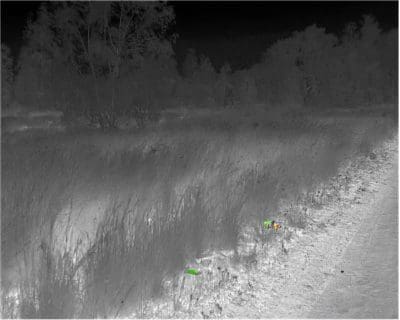This post is also available in:
 עברית (Hebrew)
עברית (Hebrew)
The world of thermal imaging is prevalent in countless fields, including agriculture, infrastructure, medicine, automotive, security, etc. Applications that use thermal sensing build a two-dimensional image from temperature reflections from the environment. A new emerging field in the thermal world is polarimetry.
In contrast to thermal imaging, which provides a limited temperature picture, polarimetric thermal imaging provides additional information about the composition of materials and orientation of the objects in the picture, enabling a significant expansion of detection and classification capabilities. It is likely that within ten years the market share of polarimetric thermal will be embedded in up to 50% of the thermal imaging market, and will most likely expand the reach to additional applications that are unattainable with regular thermal.
Polarimetric imaging provides pixel-based data from which significant information can be obtained, like 3D imagery, and the ability to separate and identify materials. For several decades researchers tried to create a polarimetric thermal imaging system and encountered hardware and software challenges.

In 2018, Polaris Sensor Technologies, AL USA, developed a camera incorporating polarimetry in hardware, but ever since the industry has been struggling to develop an image processing software that can process the unique polarimetric attributes these sensors generate. Frenel Imaging’s proprietary image processing approach presents a revolution in the field and led Polaris to sign a teaming agreement with Frenel to provide their cameras with Frenel’s image processing software.
Frenel is currently working on a new generation image processing infrastructure, designed for managing and displaying polarimetric information, the camera’s operating system. The company has developed a system that covers all aspects of information management, from processing raw data to the presentation of the relevant information for the application. Frenel’s image processing infrastructure fills a fundamental gap in the polarimetric thermal world, which is currently a significant developing trend worldwide.
Significant uses in the security world include target detection and identification, smart munition, thermal face recognition and drone detection.
Nowadays, there are attempts to enhance drone detection with thermal cameras, which is very difficult to do in “noisy” environments (forested or urban areas) or in harsh weather. In addition, at a distance the drone will sometimes be displayed only by a few pixels, which makes it difficult to identify or distinguish from a bird. Polarimetric photography receives a material signature, which provides the necessary information for identification in challenging environments and conditions.
Another important use of the technology comes from the automotive world. Thermal cameras are currently used to detect interference with autonomous driving, but the resulting information has limitations that polarimetry can improve. For example, the current sensors cannot detect oil or black ice on roads (a life-threatening factor) or identify an object moving toward the road through vegetation, but polarimetric technology can provide the missing information.
Frenel uses image processing and artificial intelligence capabilities to enhance the information obtained from polarimetric imaging, allowing companies to access the full potential of their polarimetric data and reach enhanced decision-making and high accuracy in applications like target identification, material classification and surface characterization.
Arik Nir, CEO of Frenel Imaging, emphasizes the importance of their work in the industry: “Our customers and partners rely on our image processing solutions that are fundamentally different from what has been done in the field to this day, to improve their application capabilities to new levels that have not been possible until now. We see our achievement as an evolution from processing a two-dimensional image to processing a four-dimensional image. We believe we can be the leaders in this growing industry.”


























